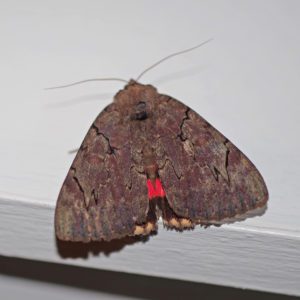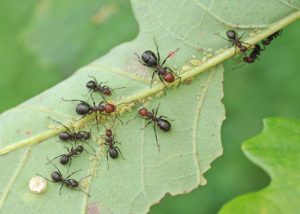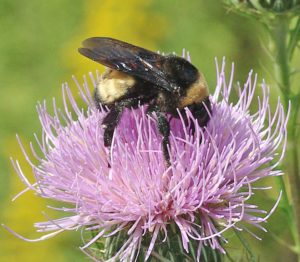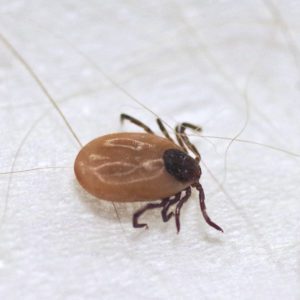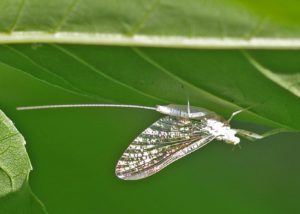Howdy, BugFans,
The “Bugs in the News” folder is overflowing again. Here’s a tasteful selection of bizarre, scary, and thought-provoking information about the wonderful world of invertebrates. Thanks to those who shared articles.
MOTHS
We’ve been getting it wrong – again: https://www.theatlantic.com/science/archive/2019/10/textbook-evolutionary-story-wrong/600295/.
ANTS
are always up to something:
BUMBLEBEES
The BugLady always thinks that bumble bees look like they’re having fun, and now it turns out that they’ve been doing some higher-order mental processing, too: https://www.smithsonianmag.com/smart-news/humans-bumblebees-may-create-mental-images-their-brains-180974248/?utm_source=smithsoniandaily&utm_medium=email&utm_campaign=20200221-daily-responsive&spMailingID=41844780&spUserID=ODg4Mzc3MzY0MTUyS0&spJobID=1701814900&spReportId=MTcwMTgxNDkwMAS2.
Bumble bee populations are declining, and, as with other insects, it’s hard for scientists to define the problem when, for most species, there are few baseline population studies. You can help! Census the bumblebees that you see with the help of the Wisconsin Bumble Bee Brigade. Observe them casually or establish a bumble bee route. See http://wiatri.net/inventory/bbb/ for information about participating in this Citizen Science project. The good news is that you don’t have to know what you’re looking at – just send pictures per their instructions and they’ll do the heavy lifting.
TICKS
The BugLady’s paternal grandfather liked his beef cooked very well done, but her maternal grandfather used to say that you should just run the cow past the grill (the union between the offspring of these two men was a mixed marriage, indeed). For those of us who like red meat, here’s a disturbing article about ticks and alpha-gal: https://www.npr.org/sections/thesalt/2018/06/25/621080751/red-meat-allergies-caused-by-tick-bites-are-on-the-rise?utm_source=npr_newsletter&utm_medium=email&utm_content=20180625&utm_campaign=news&utm_term=.
It’s never too early to start thinking about tick checks in Wisconsin – the BugLady has seen deer/black-legged ticks (of Lyme disease fame) on warm days in February.
TOO MANY INSECTS
Mind-boggling pictures of a truly Biblical plague https://www.theatlantic.com/photo/2020/01/photos-worst-locust-swarms-decades-hit-east-africa/605653/?te=1&nl=morning-briefing&emc=edit_NN_p_20200129§ion=whatElse&campaign_id=9&instance_id=15542&segment_id=20754&user_id=48ae4cbec4a693ab58f7a257b0a261ad®i_id=106911568ion=whatElse.
NOT ENOUGH INSECTS
Articles from all parts of the globe continue to sound the alarm about drastically decreasing insect populations. It’s important to grasp the potentially profound fall-out from these population declines. Insects provide important ecological services like pest control and undertaking; they pollinate our food (or the food of our food), and they are important members of an awful lot of food chains and webs (they are bird food, trout food, dragonfly food, etc.) (yeah – preaching to the choir, here). Here are a few articles about:
The windshield test – https://www.theguardian.com/environment/2020/feb/12/car-splatometer-tests-reveal-huge-decline-number-insects
Insects and light pollution – https://www.theguardian.com/environment/2019/nov/22/light-pollution-insect-apocalypse?CMP=share_btn_fb&fbclid=IwAR3yfD3bEkMXQz115_6_FH6spPqCgPEc4Yeb-w–NivVfqmPXPuXADhfdjY
Insects and climate change and “Season creep:” https://www.npr.org/2018/07/23/630181622/spring-is-springing-sooner-throwing-natures-rhythms-out-of-whack?utm_source=npr_newsletter&utm_medium=email&utm_content=20180723&utm_campaign=news&utm_term=nprnews.
And mayflies. In some lakeside and riverside communities, the annual synchronized “hatch” of zillions of mayflies (locally called “lake flies”) requires the deployment of big snow plows to clear the slippery insects off of roads and bridges. What happens when their numbers flag? https://www.smithsonianmag.com/smart-news/massive-mayfly-swarms-are-getting-smaller-180974046/?utm_source=smithsoniandaily&utm_medium=email&utm_campaign=20200123-daily-responsive&spMailingID=41612611&spUserID=ODg4Mzc3MzY0MTUyS0&spJobID=1682176824&spReportId=MTY4MjE3NjgyNAS2
What can we do to help insects?
- Provide hearty, native plants that will feed and shelter them throughout the year.
- Use chemicals/herbicides/pesticides sparingly or not at all.
- This helps bugs and saves gas, too https://www.sciencemag.org/news/2018/03/bees-love-lawns-lazy-homeowners.
Kate Redmond, The BugLady
Bug of the Week archives:
http://uwm.edu/field-station/category/bug-of-the-week/

